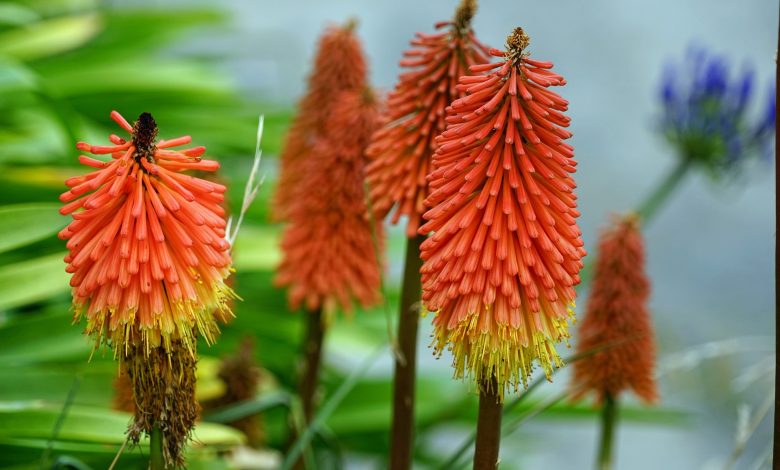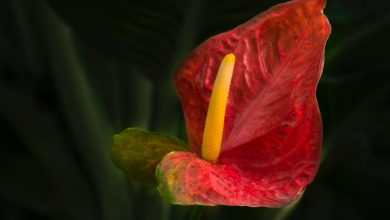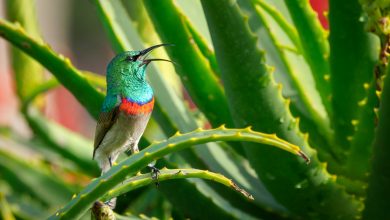Poker Plant Care: How To Grow Red Hot Torch Lilies

The red-hot poker plant, also known as the torch lily, is an ideal plant to grow if you want to attract wildlife into your garden with a distinctive looking flower. It’s also easy to grow, so it’s perfect for beginning gardeners. What is a torch lily, and how do you care for them? Below we will go over everything you could want to learn about red hot poker plants, including their botanical information and the fun part, how to grow and care for these intriguing beauties.
Botanical Information
The torch lily is a member of the Asphodelaceae family, and the botanical name for the poker plant is Kniphofia. There are more than 70 known species of Kniphofia. Torch lilies are herbaceous perennials that grow from rhizomes, but despite their common name, they are not actually lilies.
Herbaceous plants, or herbs, do not have woody stems above the ground. The rhizomes the poker plant grows from are underground stems with many different growing points. One of the more popular varieties of torch lilies that we will focus on in this article is the Kniphofia uvaria.

Native Habitat
The Kniphofia is native to South Africa. The genus was named in 1794, and hybrids continue to be grown across the world.
Flower
The flower of the torch lily is strikingly unique. At the top of the plant, the flowers are red. In the bottom half, the flowers are yellow. The unique color combination is why the plant resembles a torch or a red-hot fire poker. The flowers are numerous and appear in a slender, cylindrical shape with supple blossoms that implore you to reach out and touch them. Together, the tightly packed individual blooms form a cohesive shape. Flowers begin to bloom in late spring and continue blooming until early summer.
The reason for the two colors is that emerging buds are red, but as they mature, they turn yellow. This pattern is why the lower flowers, the early bloomers, are yellow, while the upper flowers are red. The change in colors provides new interest throughout the season.
Appearance
Botanists describe the appearance of the plant as upright and clump-forming, although that description does not do the plant justice.
Leaves
All herbaceous plants have thin leaves sprouting from the stem that can reach up to 100 centimeters long. The leaves provide an attractive base for the flowers to sprout out of. Torch lily leaves will spread out, similar to a spider plant, but the leaves stay green in color and resemble wavy grasses.
Hardiness Zone
The torch lily thrives in U.S. Department of Agriculture hardiness zones 5 to 9, which makes it viable to grow in the vast majority of the United States. The only areas torch lilies will not grow are in northern New York, Vermont, New Hampshire, and Maine in the East. In the West and Midwest, torch lilies will not grow in northern Wisconsin, Minnesota, North Dakota, and Montana.
Wildlife
Torch lilies are deer and rabbit resistant, which is a nice advantage. The flowers will attract hummingbirds, butterflies, bees, and many other species of birds.

How to Care for Poker Plants
Sunlight
Torch lilies are sun worshipers, so place them in an area that gets full sun. Full sun means that every day the plant should receive at least six hours of sunlight.
Water
The red-hot poker plant is moderately drought-resistant but still requires regular watering to grow into its full potential. If you forget a watering session, it should not be an issue. But make sure to concentrate on maintaining a sound watering schedule when the flowers begin to bloom in late spring. Add a three-inch layer of mulch around the plant to help retain water during the growing season and to protect the plant in cold winters.
Soil
Poor draining soil is one of the few issues that will kill perennials. Soil with high clay contents will be poor draining. Soil that can be described as “loamy” is perfect for poker plants.
What Is Loamy Soil?
Soil mixtures are defined by the amount of clay, sand, and silt they contain. A loamy soil includes all three of these materials, which allows it to hold in necessary moisture while draining the excess.
Here is the best mixture for loamy soil:
- Clay: 7 to 27 percent
- Sand: Under 52 percent
- Silt: 28 to 50 percent
How can you tell if your soil drains well? Try digging a hole 12” x 12” wide and 12” deep. Fill it up with water and let the soil drain. Now, fill it up again but time how long it takes to drain. Well-draining soil will see the water level go down by about one inch per hour.
Fertilizer
For the best results, start working on your soil two months before planting. Spread two inches of compost over the top of the soil and till it into the ground about six to eight inches deep.
Once the flowers are showing signs of growth, feed them with a complete plant food. If the plant food is not a slow-release version, apply again monthly.
In the fall, put a two-inch layer of mulch down at the base of the plant. The mulch will enrich the soil during the winter.
Maintenance
To lengthen the blooming season, diligently cut off spent flower blossoms. In the fall, remove any dead stalks and unattractive leaves. In the winter, you can tie the foliage of the plant to hold it together in the center. Doing so will insulate the crown of the plant, protecting it from moisture and extending its longevity. Once spring arrives and the cold weather is gone, cut the foliage back to three inches from the ground to promote rejuvenation.
Pests
Torch lilies are resilient and have no major insect or disease issues. The one aspect to be aware of is root rot in poorly draining soils.
Propagation
Propagation should be done in the early spring or fall. Using the division technique, dig up clumps and divide them in the spring before the plant begins to flower. If it has already started flowering, you can still propagate the plant, but you will have to wait until it’s done flowering to have success.

Other Common Types of Torch Lilies
New varieties of torch lilies are always being introduced. Here are seven of the more popular plants:
Orange Flame
The Kniphofia galpini goes by the name of orange flame, as it features primarily orange flowers mixed with a touch of yellow. The orange flame fans out at the bottom, creating a unique shape that can appear like a miniature orange Christmas tree. The Kniphofia galpini can grow up to hardiness zone 8.
Octopus Red Hot Poker
The giant poker, Kniphofia northiae, can grow two to four feet tall and wide. The leaves of the giant poker are bluish-green and can grow four to six feet long. The base of the plant can resemble aloe. Octopus red hot pokers are hardy in zones 6 through 11.
Kniphofia Rooperi
This variety of Kniphofia is also referred to as a torch lily or red-hot poker but grows in hardiness zones 8a-10b. It can grow three feet high and wide. The major difference between the rooperi and the uvaria is that the rooperi’s flowers start slender and then grow longer as they reach the top of the plant. This growth pattern gives the flowers an egg-like shape. Like the uvaria, the rooperi’s flowers are yellow on the bottom and red at the top.
Alpine Poker
The Kniphofia thomsonii is known as the alpine poker and is one of the more unique looking varieties. Instead of small, tightly packed flowers, the alpine poker features larger flowers that are more spread out so that you can see each individual flower. Without clumps of flowers holding each other up, the flowers of this plant tend to droop downward. The blooms will spike up as high as four feet tall and are spaced about three inches apart. The alpine poker is hardy from zones 5-10.
Winter Cheer
If you prefer more red flowers than yellow flowers, the Kniphofia praecox would be the ideal choice. Only the very bottom layer of the flowers remain yellow, with the majority of the buds appearing in a blazing red and sometimes red-orange color. This plant begins flowering in the winter and lasts through spring, so it can be a fun option to pair with another variety to keep flowers blooming throughout the season.
Marsh Hot Poker
Known by some as the marsh hot poker, Kniphofia linearifolia blooms larger than many other varieties, reaching up to six feet tall. This variety will grow red on top and yellow on the bottom, but the colors trend more towards orange and yellow when they settle in.
Giant Poker
The Kniphofia multiflora, known as the giant poker, might be the most distinctive of all the varieties. Many different stems sprout up at once, hence the name multiflora, and each has a long slender orange flower at the top. The flower and stem can reach up to over seven feet tall.



